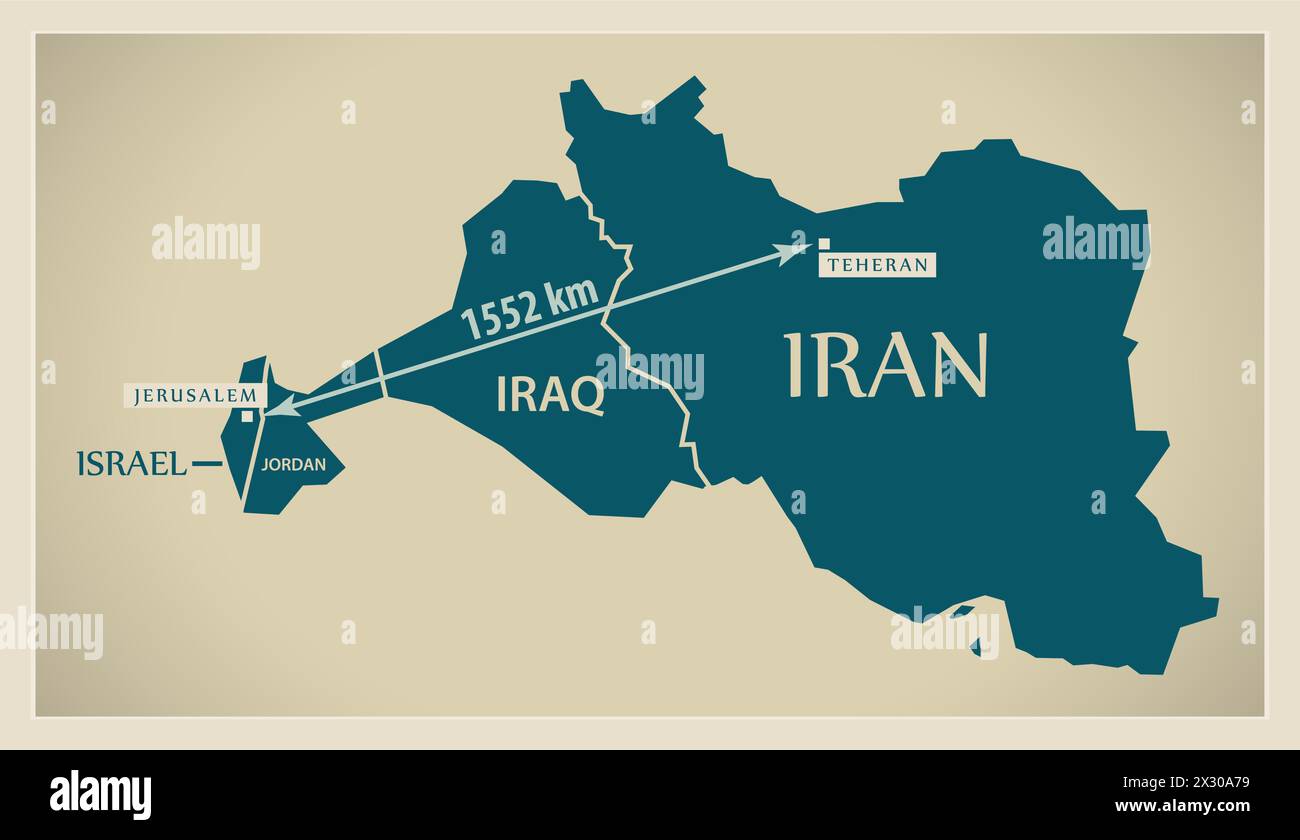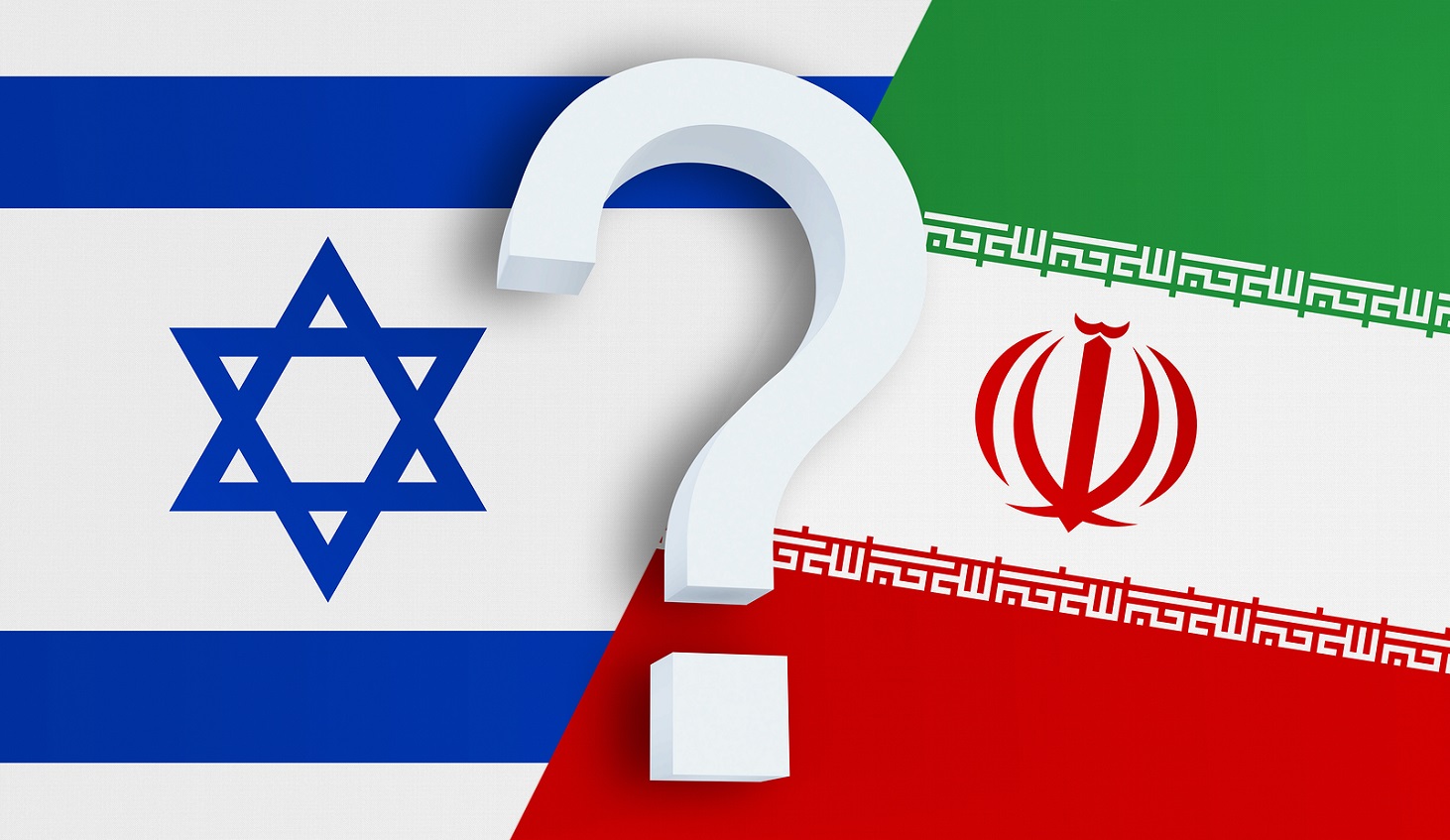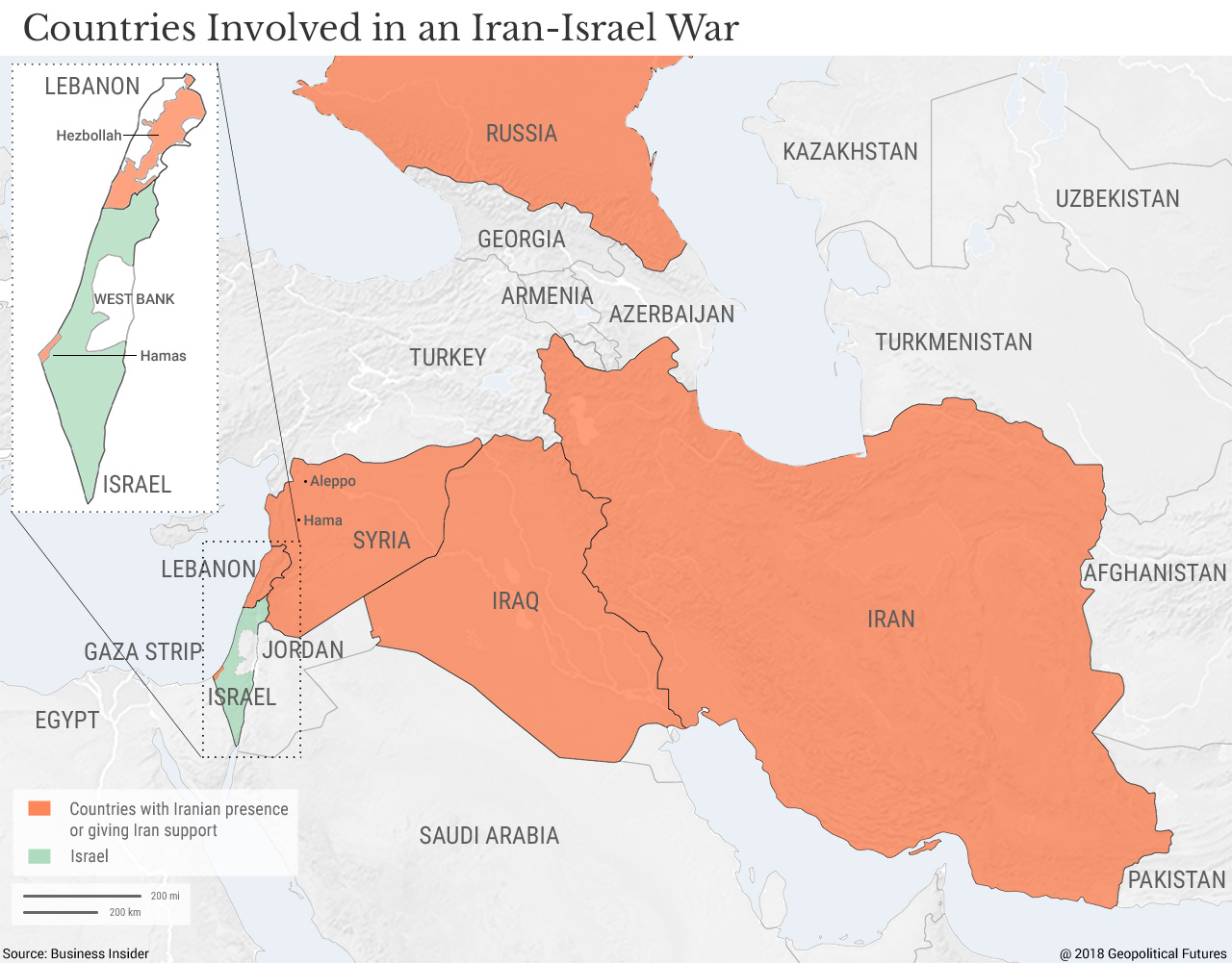Iran-Israel Distance: Kilometers, Geopolitics & Global Impact
The question of the exact distance between Iran and Israel distance km might seem like a simple geographical query, easily answered by a quick search on a map application. However, beneath the straightforward numerical answer lies a complex tapestry of geopolitical tensions, historical narratives, and strategic considerations that transform a mere measurement of kilometers into a profound indicator of regional and global dynamics. Understanding this physical separation is crucial, but equally important is grasping how this distance is perceived, manipulated, and ultimately, transcended by modern realities.
This article delves into the multi-faceted nature of the geographical separation between these two influential Middle Eastern nations. We will explore how this distance is calculated, the various factors that influence its practical implications, and most importantly, how it shapes the intricate web of their strained relationship, impacting everything from military strategies to diplomatic maneuvers on the international stage.
Table of Contents
- The Tangible Kilometers: Calculating the Iran-Israel Distance
- A Geographical Snapshot: Land, Borders, and Neighbors
- Historical Echoes: Shaping the Perception of Distance
- The Strategic Implications of Geographical Proximity
- Beyond Kilometers: The "Shrinking" World Through Technology
- The Human Element: Perception vs. Reality
- The Geopolitical Chessboard: Regional Dynamics and Global Stakes
- Navigating the Future: Distance as a Variable
The Tangible Kilometers: Calculating the Iran-Israel Distance
When we talk about the distance between Iran and Israel distance km, the most straightforward answer comes from a direct, "as the crow flies" measurement. Using widely available online tools and geographical data, the approximate air line distance between the nearest points of Iran and Israel typically ranges from about 1,000 kilometers (approximately 620 miles) to 1,200 kilometers (approximately 745 miles). This figure can vary slightly depending on the specific cities or geographical points chosen for measurement – for instance, from Tehran to Jerusalem or from the westernmost border of Iran to the easternmost border of Israel.
- Discovering The Legacy Of Desi Arnaz Jr
- Cela Lopes Pelada
- Fsi Bloge
- Low Income White Girl Eyes
- Daisys Destruction An Indepth Look At The Controversial Case
These calculations are often performed by sophisticated distance calculators, much like the one mentioned in our data: `distance.to`. Such tools allow users to "Simply enter any desired location into the search function and you will get the shortest" distance. They are designed to provide the most direct line between two points on the Earth's surface, ignoring any obstacles or political boundaries. This "air line" measurement is fundamental for understanding the raw geographical separation, but it tells only a fraction of the story when considering real-world implications.
Air Line vs. Ground Travel: More Than Just a Number
While the air line distance provides a baseline, it's crucial to understand that actual travel between Iran and Israel by land is practically impossible due to the complex geopolitical landscape. There are no direct land routes open for travel or trade between the two nations. The "shortest" distance in a theoretical sense does not translate into practical accessibility. The journey would entail traversing through multiple countries, each with its own political allegiances and security concerns. The concept of a "route planner" that `distance.to` offers for other locations, like "the distance in kilometres between Paris and Amsterdam," simply doesn't apply in a practical sense for Iran and Israel.
This distinction highlights that geographical distance, in this context, is not just about the number of kilometers. It's about the barriers – both natural and man-made – that lie in between. Mountain ranges, vast deserts, and most significantly, the borders of intermediate nations like Iraq, Syria, and Jordan, transform a seemingly short air distance into an insurmountable journey by land. This adds layers of complexity to the notion of the distance between Iran and Israel distance km.
- Trey Yingsts Partner Who Is The Man Behind The Journalist
- Asser Malik
- Tila Tequila Now
- Karim Al Assad
- Katmoviehd
The Role of Digital Distance Calculators
Despite the practical limitations of physical travel, digital distance calculators remain invaluable tools for geopolitical analysis. As the provided data suggests, "Con il calcolatore di distanza distance.to puoi facilmente determinare la distanza chilometriche tra luoghi in tutto il mondo." These platforms, by providing "des cartes interactives et des" route options for other pairs of locations, help visualize the geographical relationship between distant points. For Iran and Israel, while a direct route isn't feasible, understanding the precise air distance is vital for military strategists, policymakers, and analysts. It informs discussions on missile ranges, drone capabilities, and the logistical challenges of any potential military action or humanitarian aid. The ability to "Basta inserire i nome di due località nel campo di ricerca per ottenere la" shortest distance provides a foundational piece of data for much more complex strategic planning.
A Geographical Snapshot: Land, Borders, and Neighbors
To fully appreciate the distance between Iran and Israel distance km, one must consider the geographical terrain and the countries that lie between them. Iran, situated on the Iranian plateau, is a large country with diverse landscapes, from arid deserts to rugged mountain ranges. Its western borders are shared with Iraq and Turkey. Israel, a much smaller nation, is located on the eastern coast of the Mediterranean Sea, bordering Lebanon, Syria, Jordan, and Egypt.
The primary landmass separating the two nations is Iraq, followed by Syria and Jordan. These countries act as a buffer, but also as potential conduits or battlegrounds in any direct or proxy conflict. The absence of a shared border means that any direct military engagement would require traversing the airspace or territory of these intermediate states, significantly complicating operations. This geographical reality inherently shapes the strategic considerations for both nations, making the "shortest" air distance a less straightforward metric than it might appear on a global map. The presence of these buffer states means that while the direct air distance is relatively short, the political and logistical distance is immense.
Historical Echoes: Shaping the Perception of Distance
The perception of the distance between Iran and Israel distance km is profoundly influenced by their historical relationship. For decades after Israel's establishment in 1948, Iran, under the Shah, maintained a relatively cordial, albeit covert, relationship with Israel, driven by shared strategic interests against Arab nationalism and Soviet influence. During this period, the geographical distance might have been seen as a practical separation, but not an insurmountable barrier to cooperation.
However, the 1979 Islamic Revolution in Iran fundamentally altered this dynamic. The new Iranian regime adopted an anti-Zionist stance, viewing Israel as an illegitimate entity and a proxy for Western interests in the Middle East. This ideological shift transformed the perception of geographical distance. What was once a neutral separation became a charged void, filled with political animosity and proxy conflicts. The "distance" became less about kilometers and more about an ideological chasm. This historical pivot underscores how political will and ideological alignment can drastically redefine the meaning of physical separation, turning neighbors into distant adversaries, despite the relatively short air line distance between Iran and Israel distance km.
The Strategic Implications of Geographical Proximity
Despite the lack of a shared border and the inability for direct land travel, the relatively short air line distance between Iran and Israel distance km carries immense strategic implications. This proximity, when viewed through the lens of modern military capabilities, transforms the buffer states into potential pathways for missile strikes, drone operations, or proxy warfare, rather than impenetrable barriers. Both nations possess significant military arsenals, and their strategic planning is heavily influenced by the other's geographical reach.
Military Reach and Deterrence
The primary strategic concern stemming from the distance between Iran and Israel distance km is the capability for direct military engagement, particularly through air power and missile technology. Iran has developed a robust ballistic missile program, with ranges capable of reaching all parts of Israel. Similarly, Israel possesses advanced air force capabilities and a sophisticated missile defense system, along with its own offensive missile capabilities that could target Iranian strategic sites. This creates a delicate balance of deterrence, where each side's ability to project power across the intervening distance acts as a check on the other.
The relatively short flight time for missiles or advanced aircraft across this distance means that warning times are minimal, demanding highly responsive defense systems and constant vigilance. Furthermore, the development of long-range drones and cyber warfare capabilities further "shrinks" this distance, allowing for actions that bypass traditional physical borders. The air line distance, therefore, is not merely a number but a critical factor in calculating response times, assessing threats, and formulating defense and offense strategies for both nations.
Economic Barriers and Regional Connectivity
Beyond military considerations, the distance between Iran and Israel distance km, coupled with their hostile relations, creates significant economic barriers. There is virtually no direct trade or economic cooperation between the two countries. This lack of connectivity affects regional economic integration and stability. Instead of fostering mutually beneficial trade routes or energy pipelines that could theoretically traverse the relatively short distance, the region is characterized by economic fragmentation and competition.
The geopolitical rift forces both nations to seek alternative trade partners and routes, often at higher costs or with greater logistical challenges. This absence of economic interaction, driven by political animosity rather than pure geographical separation, underscores how human decisions can render physical proximity irrelevant for beneficial exchange, while simultaneously making it highly relevant for conflict. The potential for economic prosperity that could arise from regional cooperation remains untapped, largely due to the political and ideological "distance" that overshadows the physical kilometers.
Beyond Kilometers: The "Shrinking" World Through Technology
In the 21st century, the concept of geographical distance has been profoundly altered by technological advancements. While the physical distance between Iran and Israel distance km remains constant, the implications of that distance are continually evolving. Modern military technology, as discussed, has significantly reduced the operational relevance of physical separation. Ballistic missiles, cruise missiles, and long-range drones can traverse the intervening landmass in minutes or hours, making the idea of a geographical "buffer" less comforting.
Moreover, the rise of cyber warfare and sophisticated communication technologies means that nations can exert influence, conduct espionage, or even launch attacks without physically crossing borders. Information warfare, propaganda campaigns, and proxy conflicts fought through non-state actors also transcend physical distance. In this sense, the world has "shrunk," and the two nations, despite their geographical separation, are in constant, often hostile, contact through various technological and political means. This "virtual proximity" means that understanding the static kilometer distance is only the starting point for comprehending their dynamic and volatile relationship.
The Human Element: Perception vs. Reality
The human perception of the distance between Iran and Israel distance km is often more impactful than the actual numerical value. For ordinary citizens in both countries, and indeed globally, this distance is frequently colored by media narratives, political rhetoric, and historical grievances. Propaganda from both sides can either exaggerate the proximity to heighten a sense of immediate threat or emphasize the separation to underscore ideological differences.
For many, the "distance" isn't just about kilometers but about an unbridgeable chasm of mistrust and animosity. This psychological distance can be far more formidable than any geographical barrier. It influences public opinion, shapes national policies, and perpetuates a cycle of suspicion. Understanding this human element is crucial because, ultimately, it is the perception of distance – whether it feels short and threatening or vast and uncrossable – that often drives political decisions and public sentiment, regardless of what a precise distance calculator might display.
The Geopolitical Chessboard: Regional Dynamics and Global Stakes
The distance between Iran and Israel distance km is not merely a bilateral issue; it is a critical variable on the broader Middle Eastern geopolitical chessboard, with significant global stakes. The rivalry between Iran and Israel profoundly impacts regional alliances, conflicts, and the involvement of major global powers.
For instance, countries like Saudi Arabia and the UAE, which share concerns about Iran's regional influence, have increasingly aligned with Israel, demonstrating how the perceived threat from a distant adversary can forge new alliances. Conversely, Iran supports various non-state actors closer to Israel's borders, effectively "bridging" the physical distance through proxy forces. This dynamic transforms the geographical separation into a complex strategic arena where regional powers and global actors like the United States, Russia, and China maneuver for influence, often using the Iran-Israel rivalry as a proxy for their own broader strategic interests. The kilometers between them become a stage for a much larger play of power and influence.
Navigating the Future: Distance as a Variable
As we look to the future, the significance of the distance between Iran and Israel distance km will continue to evolve. Technological advancements, particularly in areas like hypersonic missiles, advanced cyber capabilities, and space-based assets, will further diminish the protective value of geographical separation. The ability to strike targets with unprecedented speed and precision means that physical distance becomes less of a deterrent and more of a logistical parameter.
However, geopolitical shifts could also redefine its meaning. Should there ever be a diplomatic breakthrough, or a significant change in political leadership in either nation, the very same kilometers that currently separate adversaries could theoretically become a path for cooperation, trade, and cultural exchange. Conversely, an escalation of tensions could see the distance become a critical factor in the calculus of conflict, where every kilometer matters in terms of warning time and strategic depth. The enduring importance lies not just in the fixed numerical value of the distance, but in how it is interpreted and acted upon by human decision-makers in an ever-changing world.
Conclusion
The distance between Iran and Israel distance km is far more than a simple geographical measurement. While digital calculators can quickly provide the shortest air line distance – approximately 1,000 to 1,200 kilometers – this number only scratches the surface of a deeply complex reality. This physical separation is profoundly shaped by the intervening geography of buffer states, centuries of intertwined history, and decades of intense geopolitical rivalry. Modern technology has, in many ways, "shrunk" this distance, allowing for rapid military projection and pervasive digital influence, blurring the lines between physical proximity and strategic reach.
Ultimately, the significance of the kilometers separating Iran and Israel is not static. It is a dynamic variable, constantly reinterpreted through the lens of military strategy, economic policy, and, perhaps most importantly, human perception and political will. Understanding this multifaceted "distance" is crucial for anyone seeking to grasp the intricacies of Middle Eastern geopolitics and its broader implications for global stability. What are your thoughts on how geographical distance influences international relations, especially in volatile regions? Share your insights in the comments below, or explore our other articles on geopolitical topics to deepen your understanding.
- Discovering The Legacy Of Desi Arnaz Jr
- How Much Does Jimmy Kimmel Make
- Billie Eilish
- Uncut Webseries
- Max Amini Wife

Modern Map - Distance between Jerusalem ISRAEL and Teheran IRAN Stock

Increasing threats of a regional conflict between Iran and Israel

Iran And Israel Map